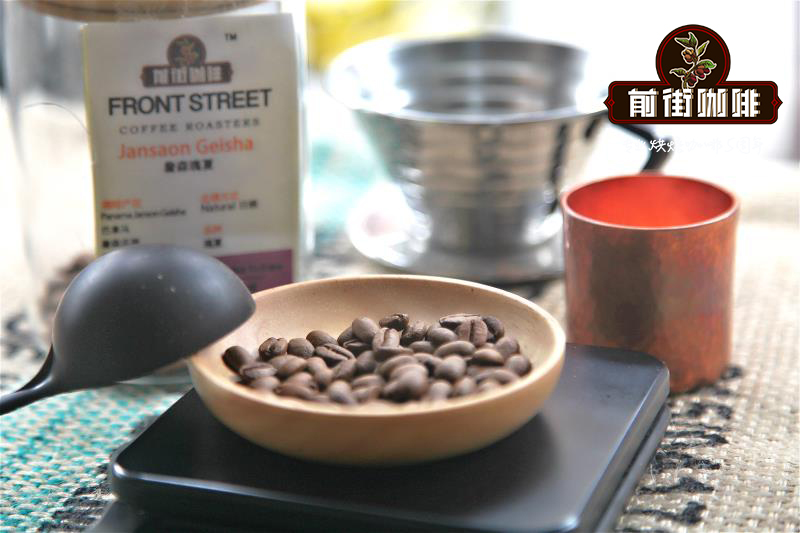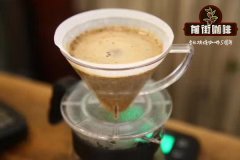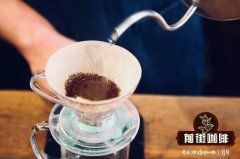A brief analysis of what is coffee honey treatment | will honey-treated coffee beans be very sweet? what is the flavor?

Professional coffee knowledge exchange more coffee bean information please follow the coffee workshop (Wechat official account cafe_style)
What is honey treatment?
Honey treatment, called HoneyProcess or Miel Process, called Honey Coffee, does not mean that coffee beans are covered with honey. The "honey" here refers to the mucous layer of coffee pulp. After harvest, coffee cherries peel off the outer pericarp with a peel machine, leaving the pulp after the sun, so that the sweetness of the pulp can enter into the beans, and it does not have to take as long as the sun method, which is a popular treatment at present.
Coffee gardens in Costa Rica (Costa Rica), Panama (Panama) and Guatemala (Guatemala) all use this method. The so-called honey treatment refers to the process of making raw beans with mucous membrane for sun-drying. After the outer pulp of the coffee bean is removed, there will be a layer of sticky jelly. The traditional washing method washes it away with clean water, but this direct drying method has been born because of the limitations of water resources in some high-altitude areas.
What's so special about honey treatment?
Juxtaposed with the two traditional treatment methods, water washing and sun treatment, honey treatment has become a unique method in coffee treatment. The production process of honey treatment is complex and laborious. If not properly controlled, the whole batch of beans will have the smell of overripe fermentation rot, but the coffee beans made well will also have a relatively high sweetness. The advantage of honey treatment is that it can reduce the acidity of beans and the aroma is more delicate, but this is the taste when honey treatment is carried out perfectly. If it is not carried out well, it will taste bad acetic acid, like onion or garlic. Even if the implementation is quite good, it will still smell a little muddy, the aftertaste will be less clean, and the miscellaneous smell will be heavier than the general washing method. Therefore, on the whole, the risk of honey treatment is much higher than that of general wet treatment. The taste difference between honey treatment and washing treatment: higher sweetness than washing, higher sugar content, and relatively higher alcohol thickness (under the premise of the same baking degree), so that the coffee retains the cleanliness of washing treatment, although the brightness of coffee has decreased, but increased sweetness and caramel taste.
The difficulties of honey treatment:
First, in the process of drying, since the sticky pulp layer is still on the coffee beans, it must be turned frequently in the first few days to prevent the coffee beans from sticking together. Therefore, much more labor is needed than the ordinary washing method.
Second, if it cannot be dried as soon as possible, it will easily be overfermented.
Third, if the coffee beans are not turned enough or the overall environment is too wet, or if the sticky pulp layer is left too thick, the coffee beans will easily get moldy, so some coffee farms will use machines to control the thickness of the sticky pulp layer left behind, so that the coffee beans can be dried more quickly, and their overall taste will be more consistent.
4. compared with the water washing method, it needs more space and takes longer days to dry.
Classification of honey treatment
According to the different degree of honey treatment, honey-treated coffee can be divided into white honey treatment, yellow honey treatment, red honey treatment and black honey treatment.
White honey: retain 20-30% pectin; according to the drying thickness and turning times, the drying time is short.
Yellow honey: retain about 60% of the pectin; drying method requires the most direct heat absorption, accept the most light drying, lasting about 8 days to achieve a stable water content.
Red honey: retain about 75% of the pectin; dry longer than yellow honey, and reduce the time of direct sunlight exposure, even in shading sheds, lasting about 12 days.
Black honey: retain close to 80% pectin; dry for the longest time, lasting at least 2 weeks, with a cover to avoid too strong sunlight, prevent drying too fast, and make sugar conversion more fully.
END
Important Notice :
前街咖啡 FrontStreet Coffee has moved to new addredd:
FrontStreet Coffee Address: 315,Donghua East Road,GuangZhou
Tel:020 38364473
- Prev

Analysis of Coffee Solarization| How is the coffee processed and what flavor does it have?
Professional coffee knowledge exchange More coffee bean information Please pay attention to coffee workshop (Weixin Official Accounts cafe_style) Sunlight treatment method Sunlight treatment method Step 1 Coffee fruit harvest manual or mechanical harvest Step 2 Fruit sorting manual or flotation method Step 3 Sunlight directly on the ground drying or special drying site Step 4 When the coffee fruit reaches appropriate
- Next

Do you know what coffee honey is? is there anything special about coffee honey treatment?
Professional coffee knowledge exchange more coffee bean information please follow the coffee workshop (Wechat official account cafe_style) Why is it called honey treatment? There are three main ways to treat coffee: sun exposure, water washing and honey treatment. The sun drying method is to directly expose the coffee cherries before removing the shell and pectin layer; the water washing method is to screen the coffee pulp before exposure and ferment to remove the pectin layer.
Related
- Beginners will see the "Coffee pull flower" guide!
- What is the difference between ice blog purified milk and ordinary milk coffee?
- Why is the Philippines the largest producer of crops in Liberia?
- For coffee extraction, should the fine powder be retained?
- How does extracted espresso fill pressed powder? How much strength does it take to press the powder?
- How to make jasmine cold extract coffee? Is the jasmine + latte good?
- Will this little toy really make the coffee taste better? How does Lily Drip affect coffee extraction?
- Will the action of slapping the filter cup also affect coffee extraction?
- What's the difference between powder-to-water ratio and powder-to-liquid ratio?
- What is the Ethiopian local species? What does it have to do with Heirloom native species?

